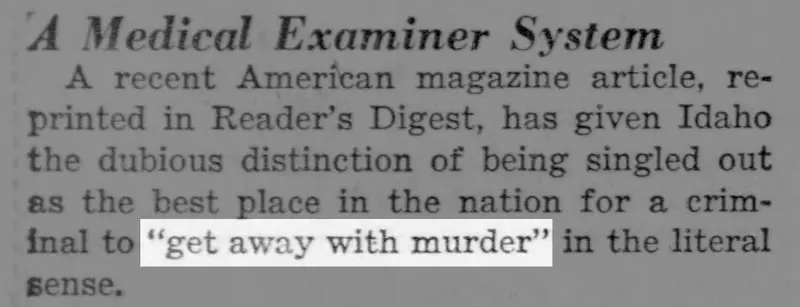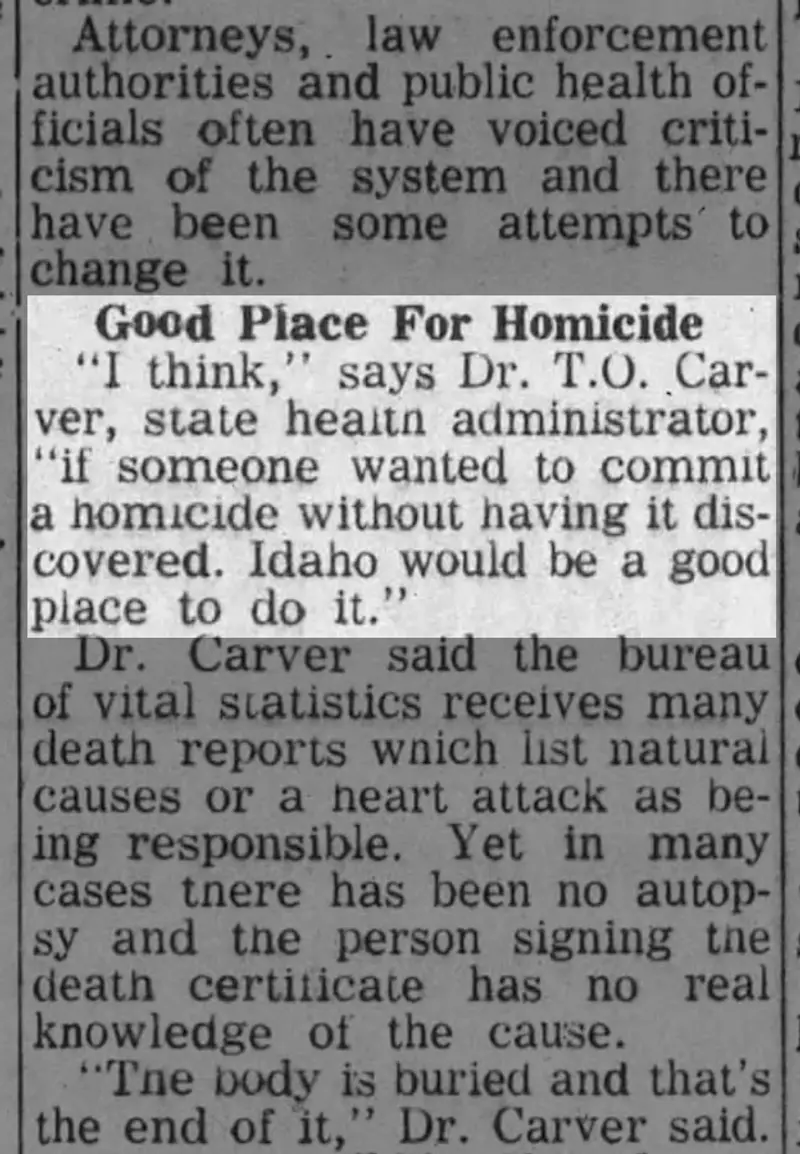A string of suspicious deaths. Two cases of infanticide that were nearly labeled as sudden infant death syndrome. A curiously low rate of opioid overdose deaths. These are among the red flags Idahoans have pointed to over the decades as they tried to get those in power to change Idaho’s system for death investigation, which relies on elected county coroners with virtually no state support or oversight.
Lawmakers have come close a few times to instituting reforms. But every attempt has failed. Often, the reason is simple, current and former coroners and national experts told ProPublica in recent months: Nobody wants to spend money on death.
But that leaves Idaho with a system where one coroner can choose not to follow national standards while a neighboring county’s coroner does.
Calls for reform to Idaho’s system have popped up nearly every decade since at least the 1950s. Some of the earliest pleas for change came from local physicians and state health officials, alarmed by Idaho’s refusal to modernize its approach to death investigations.
November 1951
The Idaho Statesman highlighted a national magazine article that called Idaho “the best place in the nation for a criminal to ‘get away with murder’ in the literal sense” because the state exemplified “how an antiquated county coroner’s system can contribute to frequent miscarriages of justice.”

Credit:
Idaho Statesman. Highlighted by ProPublica.
March 1959
A doctor who’d served as coroner of Idaho’s largest county resigned, citing “antiquated and totally inadequate” state law. He said legislators that year declined to introduce a bill that was “a middle of the road endeavor between the abysmal inadequacy of existing law and a central state medical examiners system.”
September 1965
Dr. T. O. Carver, state health administrator at the time, told The Associated Press, “I think … if someone wanted to commit a homicide without having it discovered, Idaho would be a good place to do it.” Carver praised Oregon’s medical examiner system and said changing Idaho to a similar setup would cost more, but it would yield evidence and truth.

Credit:
Sandpoint News-Bulletin via Bonner County Daily Bee. Highlighted by ProPublica.
October 1965
The director of Idaho’s vital records bureau raised alarm about the qualifications of coroners, the state’s autopsy rate and “questionable” death investigations. The director said coroners handled 600 to 700 deaths in Idaho each year, and 10% or less had autopsies.
Fall of 1976
A hospital pathologist in rural Idaho called for replacing the state’s “archaic” coroner system with a medical examiner’s office. “Idaho is one state where it would be very easy to commit murder and go undetected,” he said, according to news archives. “With a little intelligence and care, no one would ever know it happened under the present coroner system in our counties.”





